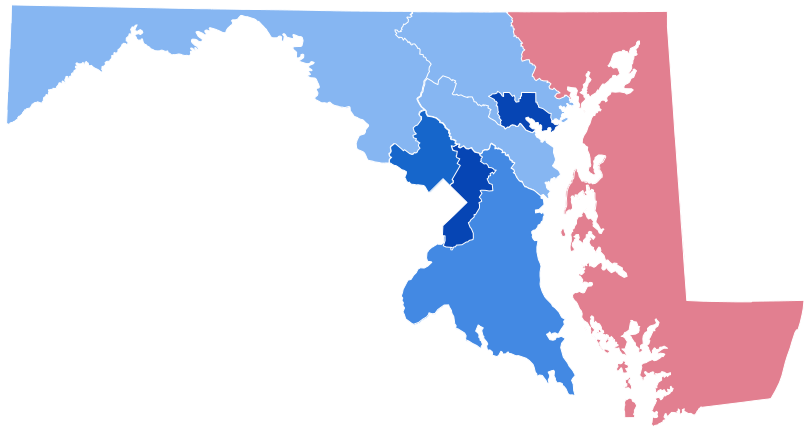Breaking Down the Blueprint: Board Offers Feedback to Local School Systems

Recently, the Blueprint for Maryland’s Future Accountability and Implementation Board (AIB) approved all 24 school systems’ first submissions of local reform plans.
Most counties have already planned to increase salaries for teachers, prepare to expand prekindergarten opportunities for 3- and 4-year-old children and provide career counseling for middle and high school students.
The plans also detail how local officials will implement Blueprint strategies through the upcoming 2023-24 school year.
Each school system's plan will provide a roadmap for local school officials to receive assistance from staff of various agencies as they prepare documents that outline strategies through the 2026-27 school years and in order to submit them to the board by March.
Meanwhile, the AIB made available summaries of each approved school system’s plans along with feedback from AIB staff specifying “areas of strength and opportunity” and “areas for further growth and improvement.”
Here’s a snapshot of the feedback for each school district on the Eastern Shore:
Caroline – Strength: “Caroline County provided comprehensive responses in its implementation plan overall, but particularly in describing its K-12 mathematics and literacy instructional plans. Caroline’s process for identifying and selecting both high-quality and culturally responsive instructional materials by utilizing the MABE [Maryland Association of Boards of Education] equity lens and evaluating potential materials against a culturally responsive scorecard is particularly noteworthy. AIB staff look forward to following Caroline’s progress in forming a workgroup to identify specific criteria for culturally responsive materials in the 2023-24 academic year.”
Improvement: “Caroline’s implementation of CTE [career and technical education] programs could benefit from a greater focus on opportunities that CTE pathways present for students to attain high-wage, high-skill jobs. This could also help to encourage more students to pursue industry credentials and enroll in high school apprenticeships.”
Cecil – Strength: “Cecil’s draft comprehensive literacy plan is based on findings from a root cause analysis of disparities in student reading achievement conducted by the LEA [local education agency] in 2021 to address both pandemic-related learning loss as well as historical opportunity gaps. The plan is organized around their strategic intentions, current actions, and growth steps for the 23-24 school year. Some of their strategies include enhancing early literacy instruction, consistently using evidence-based practices in the classroom, and providing individualized academic support for all students. While the LEA may intend to implement some of the actions described in the literacy plan beyond the upcoming academic year, in future updates to the literacy plan, Cecil may consider explicitly identifying long-term intentions, actions and growth steps centered on a districtwide vision for literacy.”
Improvement: “Cecil has a detailed process to select and approve instructional materials, but the selection criteria does not include cultural responsiveness, beyond relying on EdReports ; the LEA should develop a plan to incorporate this into its selection process.”
Dorchester – Strength: “DCPS is expanding its pipeline of teachers through partnerships with the Teacher Academy of Maryland (TAM) program, Chesapeake College, and Salisbury University with a specific focus on efforts that will diversify the teaching force to better mirror the student body. Continue to seek solutions to fill hard to staff positions through these and additional collaborations.”
Improvement: “DCPS describes how staffing challenges are impacting implementation throughout the plan, including professional development and supporting students who are not yet meeting college and career [readiness] (CCR) expectations. As strategies are developed to overcome these challenges, DCPS has the opportunity to consider creative approaches that will position the district as an early innovator in implementing the Blueprint, particularly with regards to meeting career ladder expectations. Such strategies could include teacher leaders returning to teaching for part of the day while creating, leading and monitoring professional development efforts; using high quality, school day tutoring funded through grants; and reallocating central office staffing to ensure teachers are in the classroom and students are receiving necessary support, etc.”
Kent – Strength: “Given Kent's need to provide CCR [college and career readiness] support for very large numbers of students, the LEA [local education agency] has some strong structures in place now to build on including their Trojan Time period (to offer support/enrichment during the school day) and the summer programming that combines academic catchup with CTE exploration. The LEA [local education agency] is thinking about the support it provides as needing to be engaging to students [and] Kent County is collaborating with neighboring Cecil County to organize community schools.”
Improvement: “Like most LEAs, Kent’s focus on the career ladder to date has been on supporting teachers working to achieve National Board Certification. The district needs to think through how to structure new teacher roles and organize staffing to better serve students in their schools. The LEA will benefit from technical assistance and guidance to develop a career ladder that goes beyond a focus on National Board Certification/salary incentives and leverages teacher leadership to improve teaching and learning.”
Queen Anne’s – Strength: “Queen Anne’s has created a continuous improvement process for their dual enrollment program. Data on how students perform prior to and in their dual enrollment courses will be used to help future students navigate whether to participate and which classes to take and help shape their partnerships with IHEs (institutions of higher education).”
Improvement: “QACPS has historically had trouble staffing math, world language, and secondary science teachers; recent shortages and decreasing enrollment in teacher preparation programs have made it hard for them to staff special education, elementary, and secondary positions in all levels. Queen Anne’s actively recruits at a number of events, but because of these shortages, the LEA [local education agency] needs to consider additional strategies to build strong teacher and teaching assistant pipelines, including through new recruitment and retention strategies (especially those targeting historically underrepresented populations).”
Somerset – Strength: “To improve the teacher workforce, the district plans to conduct a needs assessment and create a recruiting and retention plan and gave good examples of work underway such as supporting a paraprofessional cooperative learning experience at the high school and attention to recruiting diverse candidates [and] to help more teachers earn Master’s degrees, Somerset has formed a teacher cohort with neighboring counties where they visit classrooms and gain a wider range of pedagogical experiences.”
Improvement: “Although the district has comprehensive plans for literacy and mathematics, there was not always enough detail in the plans to determine how aligned these efforts are with the Blueprint and if the district is thinking systemically about how best to ensure effective classroom instruction. Somerset will need to focus on developing in greater detail and implementing with fidelity comprehensive plans for literacy and math aligned with the Blueprint in order to increase student achievement levels and enable more students to be on track to meet CCR [college and career readiness].”
Talbot – Strength: “There is a comprehensive plan and commitment to monitoring key data and intervening early for students who are not on track as they enter high school, including an organizational audit to look for connections between policies and practices that either support or hinder student success [and] partnering with neighboring counties to collaborate on cross-county CTE [career and technical education] program offerings to broaden student options.”
Improvement: “As a smaller county, Talbot faces a number of challenges in Blueprint implementation including expanding early childhood education options (no private providers and no 3 [year] olds enrolled currently) and attracting the needed mix of teachers, support staff, and English Learner specialists. These were acknowledged and strategies were discussed but will need ongoing attention.”
Wicomico – Strength: “Wicomico’s plan demonstrates the LEA’s [local education agency's] strong understanding of subject-specific shortage areas and challenges to expanding their teacher workforce. The LEA describes in-depth early plans for improving teacher diversity to match the diversity of the district’s student population that encompass a Grow Your Own initiative, partnering with institutions of higher education (including HBCUs [historically Black colleges and universities]), and creating a paraprofessional mentorship program.”
Improvement: “The LEA identifies a comprehensive plan for recruiting teachers and supporting them as they pursue National Board Certification (NBC). Since recruitment relies heavily on outreach from NBC facilitators to prospective teacher candidates, Wicomico should consider providing ongoing professional development and guidance to NBC facilitators beyond the Virtual Training Course they are required to complete.”
Worcester – Strength: “Worcester describes a coherent plan for ongoing, high-quality, job-embedded professional development that includes elbow-to-elbow coaching sessions with consultants; virtual training sessions; regularly scheduled professional learning communities (PLCs); and ongoing student-centered coaching cycles provided by instructional coaches. Notably, Worcester has established an ELA [English Language Arts] Committee that norms collaboratively using exemplars of student work to ensure consistency in grading across the district. The LEA’s [local education agency's] plan does not identify a similar committee for mathematics or other subject areas; WCPS may consider developing additional committees if they are not in place.”
Improvement: “Worcester’s plan provides great detail on its current use of funds to support multilingual learners. While it provides some initial thoughts about what it could do differently in the future, it would be helpful to see more specificity around these potential strategies for increasing its investments and reallocating staff and resources to improve the education of EL [English learner] students.”
This article was originally published in Maryland Matters.
William J. Ford has worked as a newspaper reporter for more than 20 years. Most recently, he spent seven years covering Prince George’s County, some Maryland politics, and other local news in the D.C. area for the Washington Informer.
Common Sense for the Eastern Shore







